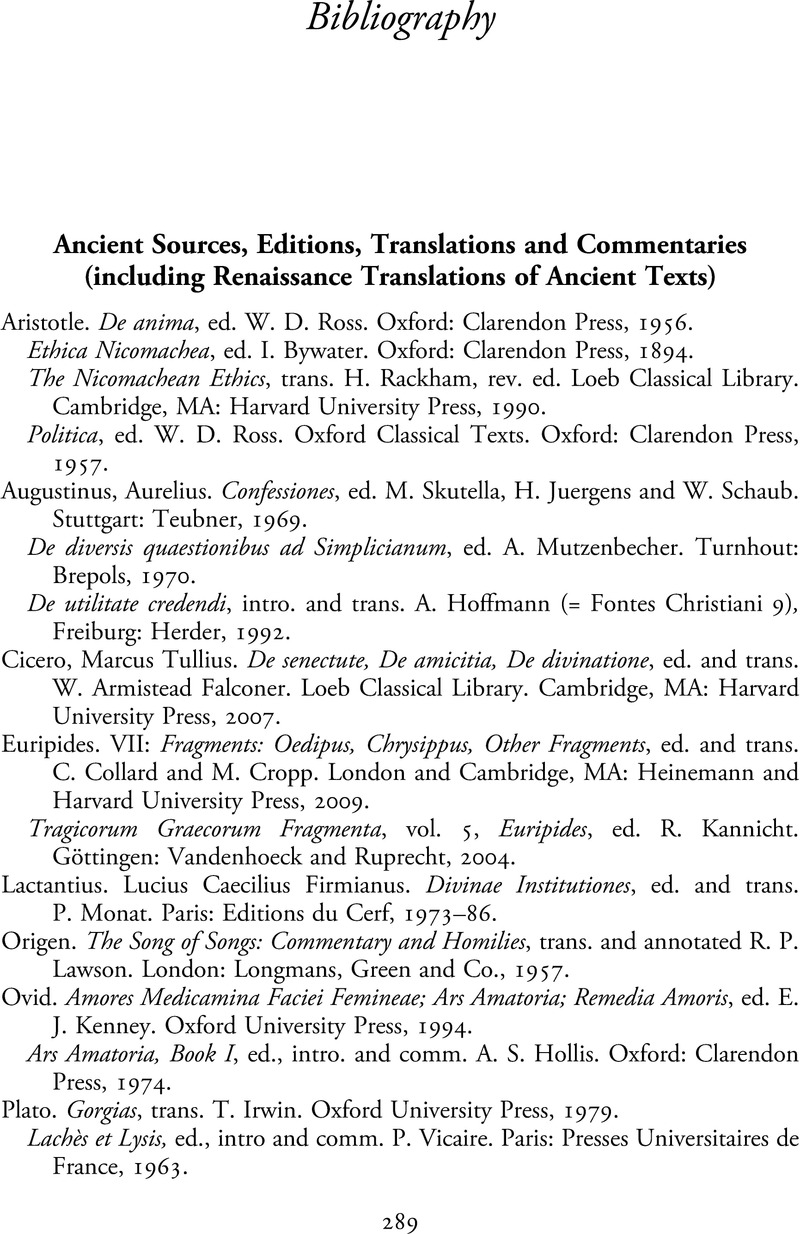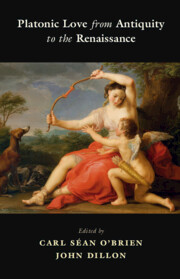Book contents
- Platonic Love from Antiquity to the Renaissance
- Platonic Love from Antiquity to the Renaissance
- Copyright page
- Contents
- Acknowledgements
- Notes on Contributors
- Introduction
- Part I Love in Plato
- Part II Development of Platonic Love in Antiquity
- Part III Love and Metaphysics during the Middle Ages
- Part IV Platonic Love during the Renaissance
- Bibliography
- Subject Index
- Index Locorum
- References
Bibliography
Published online by Cambridge University Press: 25 August 2022
- Platonic Love from Antiquity to the Renaissance
- Platonic Love from Antiquity to the Renaissance
- Copyright page
- Contents
- Acknowledgements
- Notes on Contributors
- Introduction
- Part I Love in Plato
- Part II Development of Platonic Love in Antiquity
- Part III Love and Metaphysics during the Middle Ages
- Part IV Platonic Love during the Renaissance
- Bibliography
- Subject Index
- Index Locorum
- References
Summary

- Type
- Chapter
- Information
- Platonic Love from Antiquity to the Renaissance , pp. 289 - 312Publisher: Cambridge University PressPrint publication year: 2022

